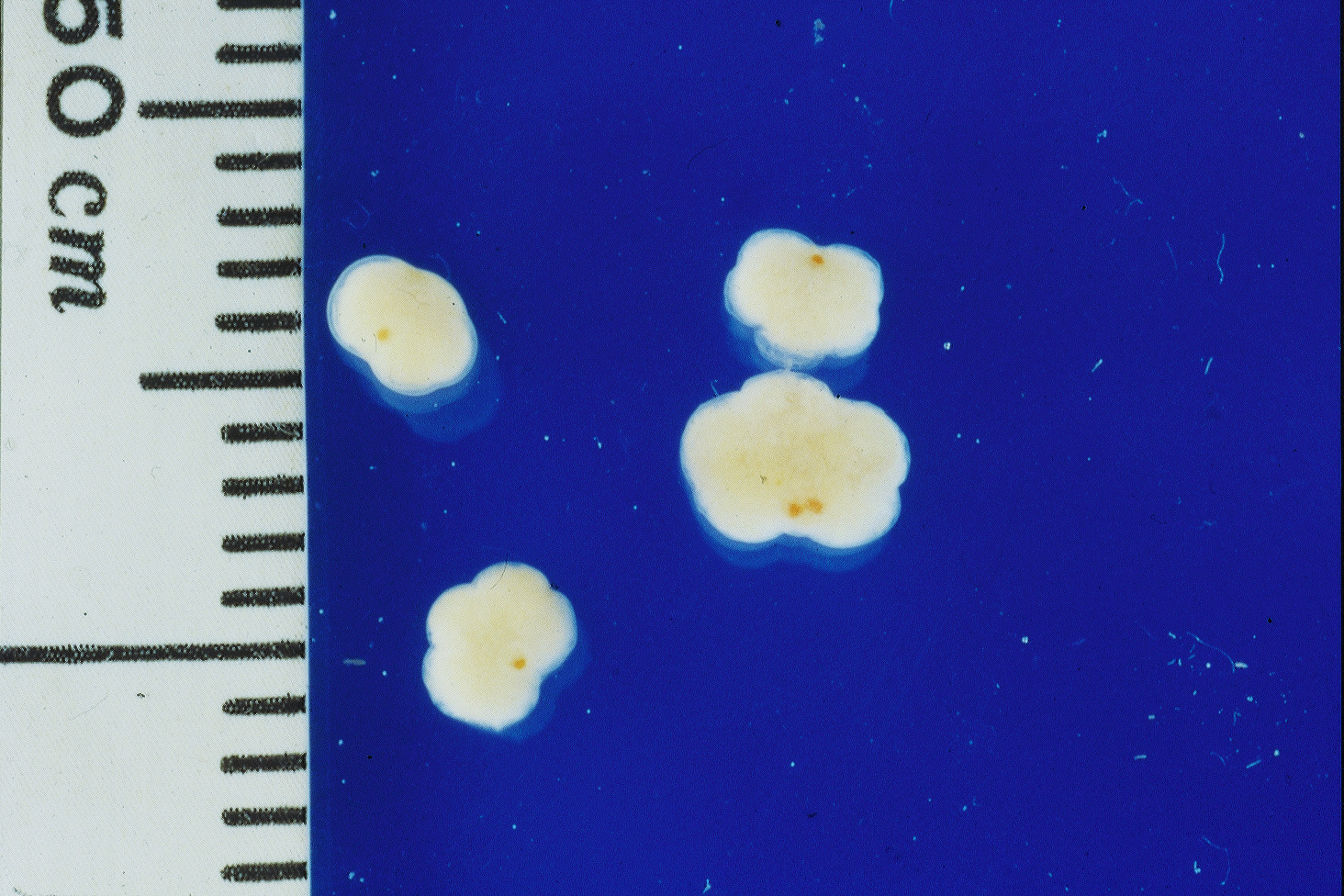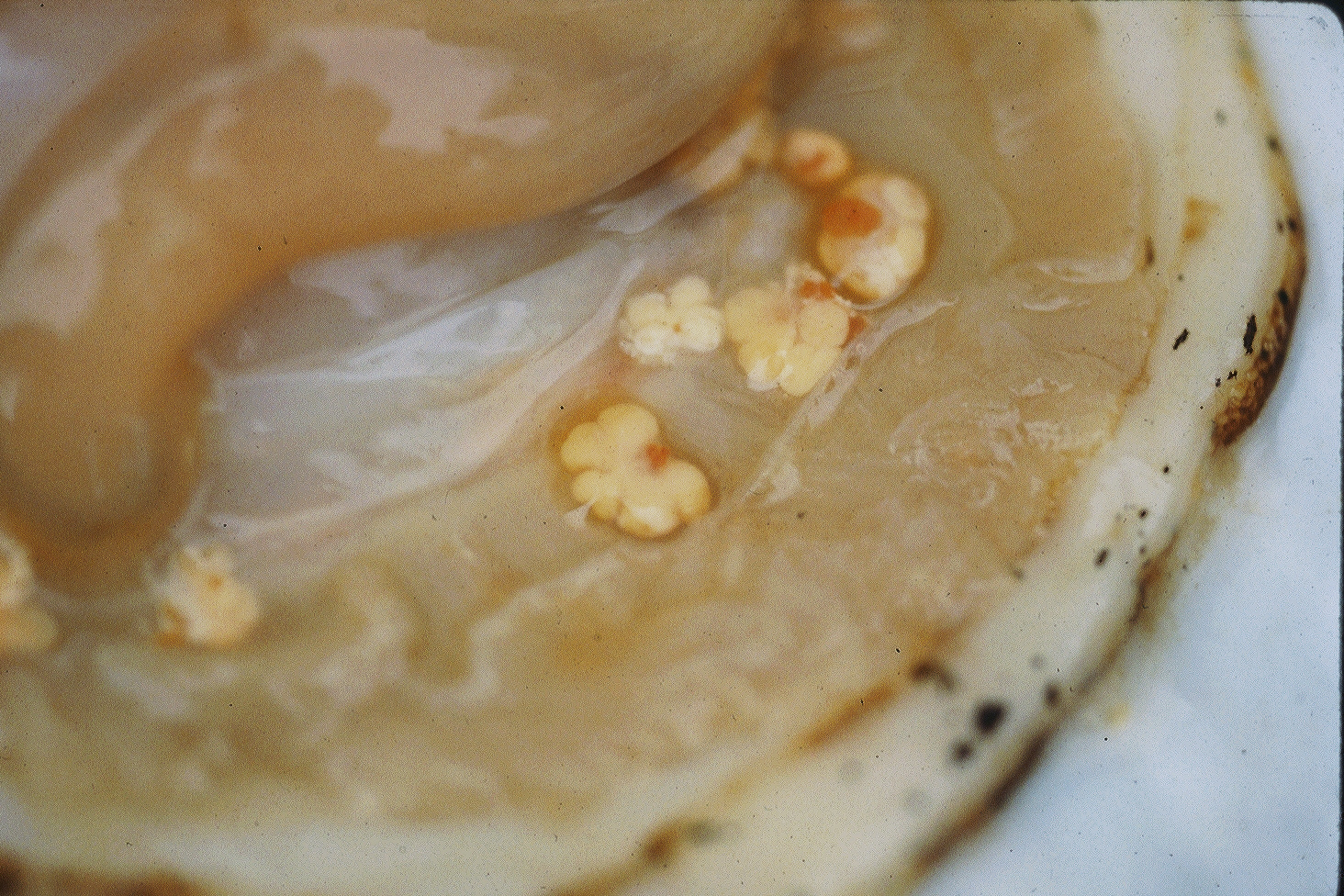

| Parasite | Pectenophilus ornatus |
|---|---|
| Taxonomy | Arthropoda, Maxillopoda, Cyclopoida |
| Hosts | Japanese scallop (Patinopecten yessoensis), prickly scallop (Chlamys farreri nipponensis), Farrer’s scallop (Chlamys farreri farreri) |
| Infection site | Gill |
| Clinical sign | No external signs are evident. Yellowish to orange parasites are visually observed in the gills (Fig. 1). |
| Parasitology | This is a parasitic crustacean. Only a female (max. 8 mm) parasitizes the scallops, while a male lives inside the female body. Adult female is rather elliptical and lobate in shape, which is subdivided into five peripheral bulges. The taxonomic position of the parasite was enigmatic due to its unique morphology such as the absence of any indication of segmentation which is normally observed in other copepods. However, the recent molecular analysis placed the parasite in the mytilidoid (Huys et al., 2006). |
| Pathology | Heavily infected scallops are emaciated, resulting in decrease of the condition factor, because the parasite is a blood-feeder. (Nagasawa and Nagata, 1992). |
| Health hazard | Since this parasite is not infectious to human, it is harmless in food hygiene. |
| Diagnosis | Parasites (a few mm) are readily observed in the gill. |
| Other information | This parasite was previously considered as a rhizocephalan. However, morphological observation by Nagasawa et al., (1988) revealed that it was a member of copepod. It is distributed in the Pacific Ocean from the southern tip of Hokkaido to the Mie Prefecture, where the surface water temperature in winter is 5-6 C. (Nagasawa, 1999). Pectenophilus ornatus is considered to parasitize the host in spring because immature small parasites are observed from April to June, followed by appearance of mature large ones from autumn to winter (Nagasawa, 1999). It is recommended to avoid the introduction of the live scallops which habit in the infected area to other areas. Intensity of infection is lower in the hanging culture than in the sowing culture. Also in the hanging culture, intensity is lower in the surface than in the bottom. |
| References |
Huys, R., J. Llewellyn-Hughes, P. D. Olson and K. Nagasawa (2006): Small
subunit rDNA and Bayesian inference reveal Pectenophilus ornatus (Copepoda incertae sedis) as highly transformed Mytilicolidae, and support
assignment of Chondracanthidae and Xarifiidae to Lichomolgoidea (Cyclopoida).
Biol. J. Linn. Soc., 87, 403-424. Nagasawa, K., J. Bresciani and J. Lutzen (1988): Morphology of Pectenophilus ornatus, new genus, new species, a copepod parasite of the Japanese scallop Patinopecten yessoensis. J. Crust. Biol., 81, 31-42. Nagasawa, K. (1999): Morphology and ecology of an unusual copepod, Pectenophilus ornatus, found on pectinid bivalves in Japan. Aquabiology, 21, 471-476. (In Japanese) Nagasawa, K. and M. Nagata (1992): Effects of Pectenophilus ornatus (Copepoda) on the biomass of Japanese scallop Patinopecten yessoensis. J. Parasitol., 78, 552-554. |

(Photos by K. Nagasawa)
Fig. 2. P. ornatus from Japanese scallop.
Fig. 1. Japanese scallop parasitized by P. ornatus